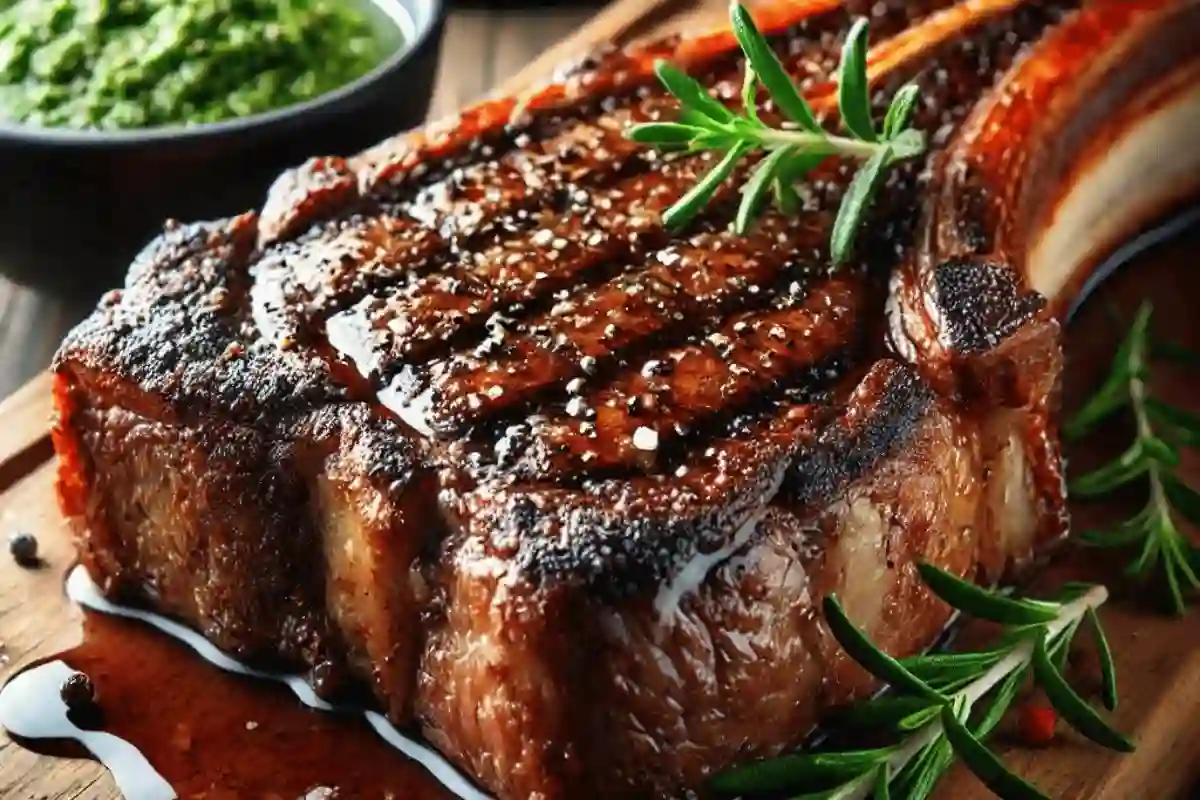
When considering affordable steak options, chuck rib is a compelling choice for budget-conscious meat lovers. This cut of beef offers a robust flavor and can be pretty versatile in preparation. But is it perfect for steak? This article explores the taste, texture, and cooking methods that make chuck rib a worthy option for your next steak night.
What is Chuck Rib?
Chuck’s rib comes from the shoulder area of the cow, which is part of the chuck primal cut. It is less tender than more expensive cuts like ribeye or tenderloin, but it can still deliver a delicious and satisfying steak experience with the proper preparation. This cut is often marbled with fat, which enhances its beefy flavor.
For more information on beef cuts and their characteristics, you can explore this comprehensive guide to beef cuts to understand where the chuck rib fits into the bigger picture.
Why Choose Chuck Rib for Steak?
Many people opt for chuck rib because of its affordability. It’s significantly cheaper than premium cuts like ribeye or filet mignon, making it an attractive option for those looking to enjoy steak without spending a fortune. In terms of flavor, chuck rib holds its own by delivering an intense, beefy taste.
Looking for more ways to enjoy affordable steak cuts? Check out this guide to affordable steaks to find other budget-friendly options that dondon’tcrifice flavor.
Chuck Rib vs. Ribeye: WhaWhat’se Difference?
- Texture: Ribeye is known for its tenderness, while chuck rib can be slightly more challenging due to the connective tissues present. However, with proper preparation, chuck rib can become tender and flavorful.
- Flavor: Both cuts have excellent marbling, which adds to their flavor. Chuck’s rib offers a more pungent beefy taste, making it ideal for those who prefer more robust flavors.
- Cost: One of the most significant advantages of chuck rib is its price. It’s cheaper than ribeye, making it an excellent option for steak lovers on a budget.
If you’re looking for specific techniques to ensure your chuck rib is as tender as possible, look at the best way to cook a cross-rib steak. This guide provides a variety of methods to get the most out of your steak.
Cooking Methods for Chuck Rib Steak
Use the proper cooking method to make the most of chuck ribit; it’s essential. Here are some popular ways to cook this cut:
- Grilling: For those who enjoy a smoky, grilled flavor, cooking chuck rib over medium heat can yield great results. Just be sure not to overcook it, making the steak more challenging.
- Pan-searing: This method allows for better temperature control and helps create a crispy crust. Finish the steak with a garlic butter sauce for added richness.
- Sous Vide: For guaranteed tenderness, try cooking chuck rib sous vide. This method involves cooking the steak in a water bath at a low temperature for a long time, then searing it briefly in a hot pan.
For more detailed instructions on sous vide cooking, refer to this step-by-step guide.
Advantages of Chuck Rib for Steak
- Affordability: One of the critical benefits of chuck rib is its price. It’s more affordable than cuts like ribeye or New York strip.
- Flavor: Despite its lower cost, chuck rib offers a rich, beefy flavor that can rival more expensive cuts.
- Versatility: Chuck ribs can be grilled, pan-seared, or cooked sous vide, making them versatile options for various recipes.
Disadvantages of Chuck Rib for Steak
- Toughness: Chuck ribs can be more challenging than other cuts due to the presence of connective tissue. However, slow cooking methods or sous vide can help tenderize them.
- Inconsistency: The texture can vary depending on the specific cut and how it is prepared so that results may differ from one steak to another.
Tips for Cooking Chuck Rib Steak
Here are some tips to get the best results when cooking chuck
-
- DonDon’tercook: Overcooking will cause the steak to become dry and tough. Aim for medium-rare to medium for the best texture.
- Slice Against the Grain: Always slice the steak against the grain to shorten the muscle fibers, making the meat more tender.
- Rest After Cooking: Let the steak rest 5-10 minutes after cooking to allow the juices to redistribute throughout the meat.
Conclusion
Chuck rib may not have the tenderness of more expensive cuts like ribeye, but it delivers on flavor and is an excellent choice for anyone looking for a budget-friendly yet satisfying steak. You can turn this affordable cut into a delicious meal with the proper cooking techniques.
